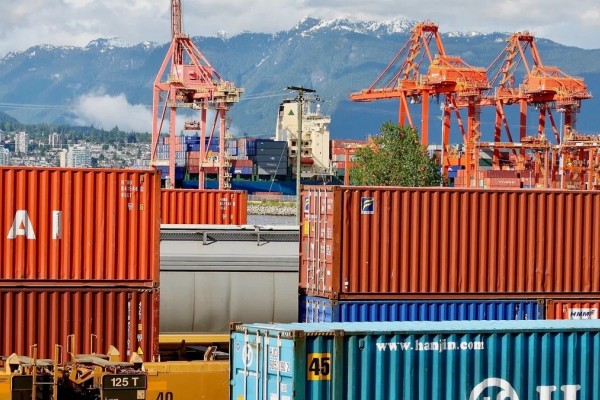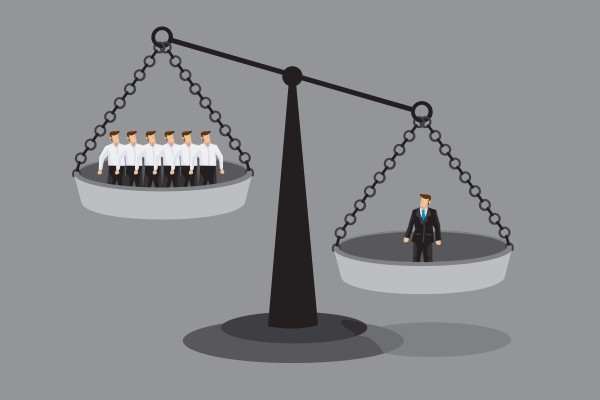The Global Economic Crisis—Part 2
A Canadian Dimension Roundtable
The 2007-08 financial crisis marked a major turning point in the world economy. From your perspective, why was the recovery so weak and why did economic stagnation continue to characterize the core capitalist countries?
The economic recovery was not sustained because the underlying problems are not being addressed either by national governments or by governments collectively through international institutions. The crisis is treated as though it is one of those periodic slumps that capitalism experiences, but one that time and the self-correcting financial markets will rectify. The assumption underlying governments’ “stimulus packages” has been that sporadic and one-off infusions of government money into the economy will spark business confidence and stimulate growth. This has not worked — the corporate sector has not increased investment despite these infusions of cash, and basically sits on the money because it does not see a faster-currency. Since fixing the banking system includes restoring bank confidence, this leads to a bias in favour of the financial orthodoxy of austerity. But the result of austerity is slower growth and seems to also be leaving banks themselves worse off.
Conflicts internal to states
Even if certain states think they know what the answer is (right or wrong), the balance of class forces inside their country may block decisive action. The Greek state (and Greek capital) understood its “responsibility to global capital” but they could not go as far as they wanted because of popular internal resistance. In the US, President Obama had concluded that more stimulus was necessary but faced pressures from the Tea Party that limited how far he was ready to go. The German state knows it must contribute much more dramatically to save the euro and eurozone, but in the context of a Europe still fragmented into nation-states, Chancellor Merkel has feared a reaction over the transfer of funds to weaker states.
The weakness of the left (our contradiction)
If there were a mobilized left in Canada and the US, it could take advantage of the discrediting of Bay Street and Wall Street and the broader growth in inequality to fight for the kind of direct state intervention to build infrastructure and expand social services that might get us out of the recession (or go further and fight for converting the banking system into a democratic public utility). The weakness of the left, ironically, is part of capitalism not getting out of its own crisis (for example, during the crucial debates in the US over stimulus in the summer of 2011, rather than the Tea Party framing the agenda, unions should have been in the streets angrily demanding jobs for useful production).
Occupy Wall Street has given a real positive lift to the left in North America, and helped raise some important anti‑capitalist perspectives into wider discussion. But there is also persistent hope that more Keynesian fiscal stimulation will provide the foundation for an economic rebound. From your vantage, what would be the core positions in the alternatives you think the left should be advancing?
The “left” will undoubtedly advance measures that have been identified over the years by the more progressive voices within capitalist economies. These policies include a financial transaction tax, strict financial regulation, a shift to greater value-added production to avoid the massive export of primary resources, higher taxes on corporations and the wealthy, increased debt during economic crises, a social safety net that protects the population, and a focus on job creation through “shovel-ready” projects to reduce unemployment during periods of crisis. There is nothing wrong with these policies, but I’d like to advance an approach that could tie these policies together. The crude understanding of Keynesian depression economics is to pump money into the economy when a crisis arises. But probably more significant for rescuing capitalism since the massive depression of the 1930s has been the institutionalist’s approach to Keynesianism. Through the building of the social institutions the dramatic swings of market “corrections” were tempered. The most familiar of these types of institutions is Employment Insurance. Theoretically this should work in a counter-cyclical way so that when more people are unemployed the fund will keep these folks from losing their whole income. However, in recent years this fund has become more pro-cyclical, as government directives for funding now require that surpluses not accumulate and deficits trigger increased premiums for employers and workers. This, of course, does exactly the opposite of what should be happening. Other types of counter-cyclical programs that normally are not recognized as such are pension, education and health care services. When people are unemployed they tend to retire if they are eligible, return to higher education if they are younger, or require more health care services if they become sufficiently depressed over their circumstances.
Another way to look at social programs is not to insist that they be “counter-cyclical” in the sense that they trigger increased spending during economic downturns, but that they are maintained for stability throughout the economic cycle. This would recognize the very important role of the state itself (through various levels of government) as a driver of economic performance. So, for example, both the education and health care systems are major economic drivers and provide good employment. The sizes of these sectors are a significant stabilizing mechanism for the economy. One could think of other services that if they were organized through the state sector could contribute to this important function. The nation desperately needs three major programs to meet the changing nature of our society. One would be an elder care program that would ensure that the elderly are treated decently when they require care help in old age. The other, long recognized as essential for families, would be a national childcare program.
And the third would be a national program for people with disabilities. Imagine the type of good employment these programs could generate if they were provided through the state sector. This good work would then contribute ongoing money into the economy that could temper the dramatic swings that so characterize our export-led economy. Of course, this would require economic planning to integrate the service sector with the resource and manufacturing sectors on a massive degree that capitalist governments have not undertaken since the last world war.
I might point out that this approach would also be more inclusive, in that it would include women in the picture for job creation, something that currently is not on the radar of governments.
Is this utopian? Sure — for those who can only imagine that the way to run an economy is to massively support the oil and gas industry, the automobile sector, a ramped-up prison system, or fighter jets. This shift in government funding from the bad to the good ultimately could be a stepping-stone to a more inclusive, egalitarian society as well.
The Harper government has persistently celebrated Canada’s economic strength in the midst of the crisis. From your perspective, what does the crisis tell us about the shape of Canada’s economy and Canada’s place in the global economy?
The Conservative government is engaged in a lot of collective back-patting because Canada is in better shape than the US and the EU. But Canada has put many billions into propping up industry during this past recession and we have absolutely no idea if it created any jobs at all.
The Federal Government’s actions indicate that it is strongly relying on tax measures for automatic stabilization. Tax reductions are the most consistent government budget action: with only one exception in every year since 1999 there have been tax reductions, and they are the only permanent measures in the stimulus packages.
Marjorie Griffin Cohen is an economist who is a professor of Political Science and Gender, Sexuality and Women’s Studies at Simon Fraser University. She is an activist who writes regularly on public policy and economics with special emphasis on issues concerning women, labour, energy, and the Canadian economy. Her most recent book is Public Policy for Women (University of Toronto Press, 2009)
This article appeared in the January/February 2012 issue of Canadian Dimension (Inuit Focus and Occupy Movement ).









